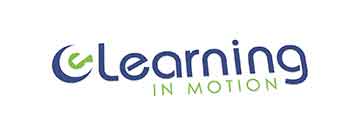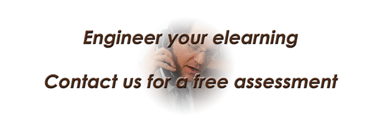Implementing a new learning management system (LMS) can be challenging, and I had the opportunity to work for organizations that went through that process. In this case, my organization had another LMS in place and I learned that adopting the new tool, when there was another in place, was the hardest part in this process. We saw immediately the benefits, the new LMS was intuitive to use, students were able to navigate their courses seamlessly, and teachers loved the analytics tool.
Table of Contents
Even though the adoption of the new LMS was the most difficult task, there was a lot of work behind this project. When choosing a new LMS you need to figure out if you want to host the software in computer servers you own (contracting cloud services is another option) or if you want to contract this service from the developer. Choosing this path will create problems on its own: you have to hire developers that know the tool’s programming language, network administrators, cybersecurity experts, and other professionals. Maintaining the tool will become a large cost of the LMS integration. Being a small unit, we decided to just license the tool, instead of hosting the platform in our servers.
Then you need to figure out if this new LMS works well with your existing tools. You should test that this is the case before you contract the service. Of course, figuring out the timeline of the project is important, you need an expected time for launching the new LMS, for administrative and academic purposes.
Adopting the New LMS
Of course, the benefits will come later once everybody understands the value of the new tool. This is going to take some time, so administrators should be patient during this whole process. What I saw during this transition, in my case, was an increase in the number of technical issues reported during the adoption process of the tool. Fortunately, along with the LMS service, we had a nice customer service as part of the contract, which helped a lot.
Part of the process of switching to a new LMS is bringing the content from the old system. To help with the transition, we worked with the contractor, and we added a service to the contract. They would move the content to the new LMS, at no cost, and we clearly stated the required deadlines. This way, we saved ourselves a lot of work in the future. Of course, there were some kinks we had to iron, but we worked with instructors and we helped in setting up courses, as soon as possible, in the new LMS.
We also had to develop training materials for instructors, users, and students on how to use the tools inside the LMS. We spent more time with instructors and assistants because their access to the LMS allowed them to create and insert content, which requires some mastery of the tools available. We provided support along the way on questions about setting up content inside the LMS. Of course, we had to deal with reports about bugs that the developers at the LMS company solved as soon as they could.
Along with this, we developed technical sheets that let users know the minimum requirements to connect to the new system. We also recommended network requirements, and this was useful during the COVID-19 pandemic, when we had to go completely online.
LMS Growth Pains
But we knew we made the right choice after some time. All courses were running inside the LMS, with students completing activities and interacting with the tools offered by this web platform. One thing we lacked in this system was a video lecture tool, but we contracted with a company that easily integrated into the LMS (this was 2015). A couple of years later, the LMS developer introduced their new vide lecture tool, which also offered live video lectures that were made available to students later.
In terms of maintaining the tool, since we contracted the service outside our network, students only needed a web browser to enter the platform. Maintenance schedules were reported to us so we can pass along the information to all users. Of course, we had some down time, mostly out of our control, but it did happen. I would say you implement a plan I use to call “doomsday” plan, a day when we lose all systems, and we have to return to paper. Believe me, it happened, and we were ready.
The Positive Side of an LMS
A great positive point for having an LMS is the sheer amount of content that you could create and the staggering number of courses you can incorporate in this system. Also, there is a limitation in some cases, but you can enroll as many students as you need. Of course, the costs of creating content are present if you have a team of specialists helping instructors with this.
Most enterprises delivering content in an LMS do have a team of instructional designers, eLearning specialists, and course developers. These specialists develop content using sound principles and practices that provide the support for learning that instructors need for their courses. Of course, along with the costs of developing content, we have to figure out the time it takes for development, depending on the project, it can be long.
Using data, we helped a lot of faculty members with improvements in their classes. We established a data-driven process that helped instructors identify those students struggling with the course, all that data was collected by the analytics tools inside the LMS. We also had a tool that allowed us to track student performance along the whole curriculum, which helps in remediation efforts and to inform decisions by colleges on student continuing enrollment. I recommend you check out the analytics tools offered by the system you choose; you will need it to make decisions later.
My Final Thoughts
I think LMS tools have made their case and now the investment for a new LMS tool is more than justified, we cannot take seriously any school, university, or large enterprise that does not have an LMS to deliver education and/or training. If you are offering a lot of courses and training modules, you need one to keep track of student performance, instructor performance, and the effectiveness of the content. It is evident how this helps with administrative, academic, and enrollment processes. Maybe in a future post I can explain how analytics can help the organization on decisions regarding the educative materials posted in the LMS.
For students, the benefits of an LMS are evident: they have lectures, notes, content, communication with peers and instructors available 24/7. All users can access their classes anytime, anywhere, which is a great feature offered by LMS systems. Colleges and universities can capitalize on their LMS by offering certificate course that are not instructor-led, where students can learn at their own pace (what we call asynchronous learning). Educational institutions have brought in a lot of income since many people need certifications from accredited providers. In my case, I helped design a course that made, in one year, more than $400,000.
Thank you for reading this post. If you would like to receive exclusive content, use the form on this page to sign up to our mail list. Please, share this post. Like this post. Leave a comment below.


